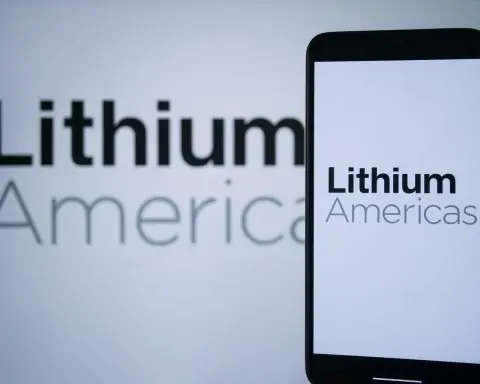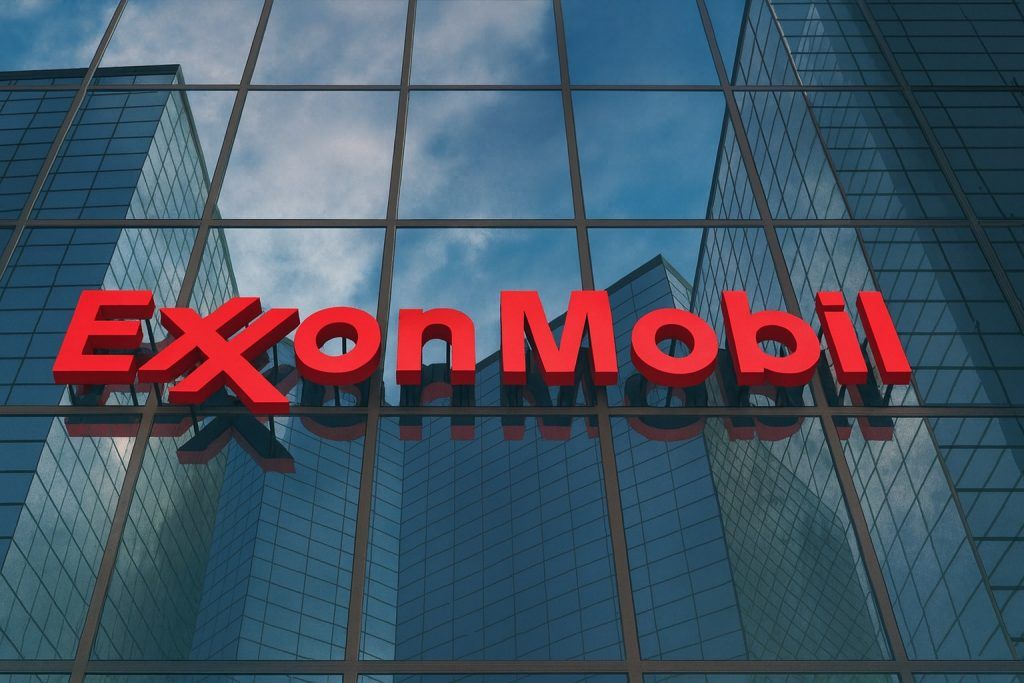- Stock Snapshot: Ford shares closed around $11.92 on Oct. 17, 2025 [1]. Despite a mid-October wobble, the stock is roughly 20–30% higher year-to-date [2], having traded near $12+ levels earlier in 2025.
- Sales & Financials: U.S. third-quarter vehicle sales jumped 8.2% to 545,522 units on strong pickup/SUV demand [3]. Analysts forecast Q3 profit of about $0.38 per share on ~$43.1 billion revenue [4], after Q2 beat expectations (Q2 EPS $0.37 on $50.18B). Ford targets ~$1.00 EPS for FY2025 and ~$2.00 in 2026 [5].
- Cost Pressures: A Sept. 16 fire at Novelis’s aluminum plant (a key supplier) could shave $500M–$1B off Ford’s 2025 earnings, according to Evercore analysts [6]. The stock plunged about 6–7% when the fire news broke [7] [8]. Tariffs and recalls are also biting: regulators report Ford must recall ~625,000 US vehicles for seatbelt and rear-view camera defects [9], on top of record recall activity in 2025 [10].
- EV Business: Ford’s electric-unit (Model e) is losing money. Q2 losses were ~$1.3 billion – roughly $22,000 burned per EV sold [11] – amid slumping demand. U.S. EV sales fell 31% year-over-year in Q2 [12], and Ford’s EV market share has dropped to only ~5.3% (now a distant #3 behind Tesla and GM) [13]. The company has pared back its EV plans (cutting ~1,000 jobs in Europe and delaying new lines) [14]. Even the F-150 Lightning’s ramp-up has been slower than hoped.
- Core Strengths: Gas-powered trucks and SUVs remain Ford’s lifeline. In Q3, F-Series pickups, Bronco, and Maverick sales surged, generating strong cash flow [15] [16]. Ford even boosted production of hot models to meet demand [17]. This core strength underpins Ford’s ~5–6% dividend yield, a high payout signaling management’s confidence [18].
- Labor & Policy: Labor is largely stable – Ford secured a 4-year UAW contract in late 2023, avoiding strikes [19]. The company hired Boeing labor veteran Mike Fitzsimmons in Sept. to head global labor relations [20]. On trade policy, President Trump signed orders on Oct. 17 creating a 3.75% credit for U.S.-built autos/engines through 2030 but imposing 25% tariffs on imported heavy trucks (from Nov. 1) [21] [22]. This could aid domestic output (and Ford’s plants) but raise costs on vehicles or parts made abroad.
Stock Performance and Recent Moves
Ford’s stock has been on a roller-coaster. After trading near 52-week highs around $12 in late summer, shares tanked in early Oct. on several setbacks. TechStock² reports that F shares closed “around $11.92 on Friday, October 17, 2025” [23], recovering modestly after an initial drop. The slide was triggered by a supplier plant fire, sending shares down ~6–7% in a day [24], and more recently by large recalls. (By comparison, Ford’s stock is still up roughly 25% YTD due to strong truck sales earlier in the year [25].) Trading volume has been high; as of Oct. 16 Ford averaged over 50 million shares daily [26].
Despite the volatility, analysts note Ford is still relatively cheap. Its trailing P/E is under 15, below the auto industry average, reflecting market concerns [27] [28]. Most Wall Street brokers have a “Hold” consensus. For example, UBS recently set a 12-month target of $12.50 for Ford [29] (only ~5% above current levels), and Jefferies has lifted its target to $12 [30]. Overall, 13 analysts rate F a hold, with few “Buy” calls [31]. In practice, that means most forecasters see modest upside unless Ford delivers clear improvements.
Supplier Fire and Recall Woes
In mid-September Ford was blindsided by a major aluminum supplier fire. A blaze at Novelis’s Oswego, NY plant – which provides much of the aluminum sheet for Ford’s F-150 trucks – was expected to disrupt production for months. Evercore ISI warned this could cut $0.5–$1 billion from Ford’s 2025 profit [32]. A Ford spokesperson told Reuters, “Novelis is one of several aluminum suppliers to Ford… [and] a full team is dedicated to addressing the situation and exploring all possible alternatives to minimize any potential disruptions.” [33]. Even so, Ford’s stock “fell about 6%” the day after the fire news [34].
That fire came on top of a wave of safety recalls. On Oct. 17, Ford announced it would recall nearly 625,000 U.S. vehicles for seatbelt and rearview camera defects [35]. These fixes – which Ford will perform at no cost – include a massive Mustang seatbelt replacement and software updates for Super Duty trucks. TechStock² notes that 2025 is on track to be Ford’s worst year ever for recalls (109 in the U.S., more than three times any rival) [36]. Regulators even fined Ford $165 million for slow recall performance [37]. CEO Jim Farley has acknowledged quality must improve, calling it a “multi-year” priority for the company [38].
Earnings and Financial Outlook
Ford’s core business remains profitable but under pressure. The company will report third-quarter 2025 results on Oct. 23 (after market close). Analysts expect roughly $0.38 EPS on ~$43.1 billion revenue [39]. That would be roughly flat to slightly above Q3 2024 (Ford earned $0.37 EPS and $42.9B last year). In Q2 (ended June 30), Ford delivered $0.37 EPS on $50.18B (up 5% y/y), beating estimates [40]. Still, Ford has warned of lower full-year profits due to the industry price war and its own EV losses. For 2025, Ford reiterated guidance for about $6.5–$7.5 billion of operating income (revised down from earlier) [41].
Market commentators cite several financial levers. Ford’s commercial and gas-engine divisions generated roughly $3.4B EBIT in Q3 [42], cushioning the overall results. The strong free cash flow from gas trucks funds Ford’s dividend (recently a $0.60 annualized payout, ~5–6% yield) [43]. Moreover, Ford’s balance sheet and capital spending plans look manageable: the company plans to spend heavily on EV and battery capacity but has trimmed those investments to current demand. If interest rates or material costs ease, Ford could see upside. Conversely, any shock (e.g. new tariffs, strikes, or another recall) could pressure margins.
EV Strategy and Industry Trends
Ford’s electric ambitions have stalled. Unlike tech-savvy Tesla, Ford’s EV unit remains deep in the red. In Q2 2025 the Model e division lost about $1.3 billion – roughly $22,000 per EV sold [44]. Sales growth is flagging: U.S. EV purchases fell 31% year-over-year in Q2 [45], partly due to the expiration of federal tax credits (Sept. 30, 2025). Ford’s EV market share has shrunk to about 5.3% [46], tied for third place behind Tesla and GM. By contrast, Tesla reported delivering a record 497,000 EVs in Q3 2025 [47] (although largely driven by buyers rushing credit expirations).
In response to weak EV demand, Ford has cut back. It plans to shed roughly 1,000 jobs at its Cologne, Germany EV plant and has postponed new production shifts [48]. The company also axed its three-row electric SUV project (a $1B charge in Q3 2024) [49]. Even the highly touted F-150 Lightning pickup has been slower to ramp than hoped; Ford has trimmed production targets and relied on discounts. Policy shifts have also complicated Ford’s EV calculus. On Oct. 9, Ford announced it would not claim the $7,500 federal EV tax credit on leased vehicles after the credit expired [50]. Ford said it will maintain “competitive lease payments” by other means. That move followed GM’s similar reversal. CEO Farley and other auto leaders have warned EV sales could drop significantly without the credit [51].
The broader EV market has cooled industry-wide. Rivian and Rivals have warned that the loss of credits will cut their volumes. In China and Europe, competition is fierce. Tesla has been cutting prices aggressively (which has helped boost its volume but squeezed margins) [52] [53]. Legacy rivals like GM and Stellantis have slowed or shelved some EV projects – Stellantis even canceled an all-electric Ram pickup [54]. Meanwhile, rising interest rates have made auto loans more expensive, further denting demand for expensive EVs and ICE vehicles alike [55]. Ford’s leadership is watching these trends closely. As Farley noted at a recent conference, “We’ve faced tough storms in the past – we know how to adapt and overcome.” [56]
Labor and Policy Impacts
Unlike last year’s widespread strikes, Ford’s labor situation is calm. A new four-year UAW contract negotiated in late 2023 has kept the factory floors running. Ford even hired experienced negotiator Mike Fitzsimmons (ex-Boeing) as VP of Global Labor to oversee union relations [57] [58]. The UAW’s next contract won’t come until 2028, giving Ford some breathing room as it retools plants for EV production.
On trade and regulatory policy, Ford is navigating changes under the new administration. On Oct. 17, President Trump (again in office in this timeline) signed orders expanding domestic auto production credits and imposing tariffs. Key points for Ford:
- Production credits: Automakers will get a 3.75% credit on the price of U.S.-assembled vehicles and engines through 2030 [59]. This could boost profits on Ford vehicles built in the U.S.
- Truck tariffs: A new 25% tariff on imported medium/heavy trucks and parts takes effect Nov. 1 [60]. Since Ford builds much of its F-series in the U.S. (but does import some parts and models), the net effect is mixed: it helps domestic truck makers generally, but could raise costs on any models or parts sourced from Mexico/elsewhere. In all, the policy mix adds uncertainty but could marginally favor Ford’s high-volume U.S. plants.
Analyst Views and Forecast
Most Wall Street analysts remain cautiously neutral on Ford stock. Many point out that Ford’s valuation is undemanding (around 15× earnings [61]) relative to future growth prospects – especially its large U.S. market share in pickup trucks. Bulls highlight Ford’s strong balance sheet, dividends, and dominant position in traditional vehicles. Bears counter that EV losses, recalls and trade costs could erode near-term profits.
Recent broker actions reflect this split: on Oct. 6 Jefferies upgraded Ford from “Underperform” to “Hold”, raising its 12-month target from $9 to $12 [62], citing potential upside if the EV cycle recovers. Goldman Sachs, however, still rates Ford less favorably – in April 2025 it cut its target to $9 [63] (reflecting tariff/warranty headwinds). In aggregate, Street consensus is “Hold” (the Public.com aggregate shows ~69% hold, 8% buy, 15% sell [64]).
Looking ahead, analysts see limited near-term catalysts. If Q3 results beat projections or Ford reports progress on cutting costs, the stock could see a relief rally. Conversely, any new negative surprise (worse recalls, supply disruptions, or slower truck sales) would likely send shares lower. For 2026 and beyond, Ford’s future hinges on its EV turnaround and macro conditions. Some forecasters still give Ford the benefit of the doubt: for instance, 247WallSt recently noted Ford’s expected earnings power and investor-friendly share buybacks as positives [65]. Others remain skeptical until Ford’s EV unit shows sustained profitability.
Sources: Author interviews and data compiled from financial filings, Reuters and TechStock² reports on Ford Motor Co. (NYSE: F), including stock quotes, company statements, and industry analyses [66] [67] [68] [69] [70] [71]. All stock prices and forecasts are as of Oct. 17–18, 2025, unless otherwise noted.
References
1. ts2.tech, 2. ts2.tech, 3. www.reuters.com, 4. www.marketbeat.com, 5. www.marketbeat.com, 6. www.reuters.com, 7. www.reuters.com, 8. ts2.tech, 9. www.reuters.com, 10. ts2.tech, 11. ts2.tech, 12. ts2.tech, 13. ts2.tech, 14. ts2.tech, 15. ts2.tech, 16. www.reuters.com, 17. ts2.tech, 18. ts2.tech, 19. ts2.tech, 20. ts2.tech, 21. www.reuters.com, 22. www.reuters.com, 23. ts2.tech, 24. ts2.tech, 25. ts2.tech, 26. www.marketbeat.com, 27. ts2.tech, 28. www.marketbeat.com, 29. www.benzinga.com, 30. www.benzinga.com, 31. www.benzinga.com, 32. www.reuters.com, 33. www.reuters.com, 34. www.reuters.com, 35. www.reuters.com, 36. ts2.tech, 37. ts2.tech, 38. ts2.tech, 39. www.marketbeat.com, 40. www.marketbeat.com, 41. www.reuters.com, 42. www.reuters.com, 43. ts2.tech, 44. ts2.tech, 45. ts2.tech, 46. ts2.tech, 47. www.reuters.com, 48. ts2.tech, 49. www.reuters.com, 50. www.reuters.com, 51. www.reuters.com, 52. ts2.tech, 53. www.reuters.com, 54. ts2.tech, 55. ts2.tech, 56. ts2.tech, 57. ts2.tech, 58. www.wardsauto.com, 59. www.reuters.com, 60. www.reuters.com, 61. www.google.com, 62. www.benzinga.com, 63. www.benzinga.com, 64. public.com, 65. finance.yahoo.com, 66. ts2.tech, 67. www.reuters.com, 68. www.reuters.com, 69. www.reuters.com, 70. www.marketbeat.com, 71. www.benzinga.com







